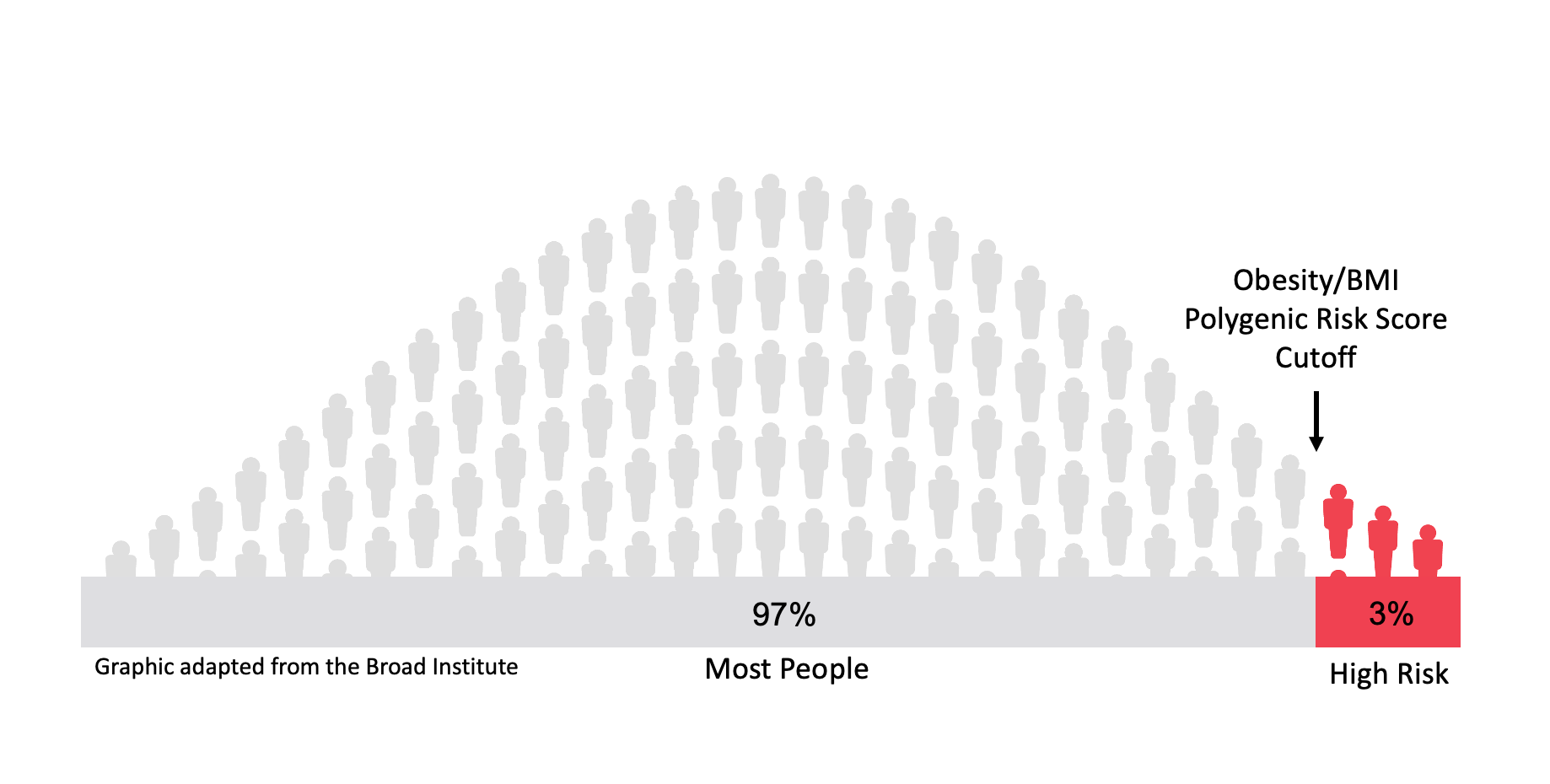Obesity (Adults and Children): Understanding Your Results
What is Obesity?
- Obesity is a treatable condition, which is defined as a build-up of body fat. Obesity is usually measured by a person’s body mass index (or BMI), which is based on their height and weight. People with higher BMI tend to have more body fat. An adult with a BMI of 30 or more is obese. A child with a BMI higher than most children (95%) of the same age and sex is obese.
- Things in our lifestyle that can increase risk of obesity include too many high-calorie snacks or fast foods, a lack of exercise, and too much time sitting watching television or working at a desk. Our genes can also make us more or less likely to be obese – and the risk of obesity is higher if one or both parents are obese.
What does high risk for obesity mean?
- Your risk assessment shows a high risk for obesity. Your polygenic risk score (PRS) was in the top 3%. This means that you may have a higher genetic risk for obesity than 97 out of 100 people.

- Obesity is a common condition in American children and adults. On average, 42 out of 100 American adults, or 42%, are obese. High risk for obesity means that your personal risk is at least 2-4 times higher than a person not in the high risk category.
- This result does not mean that you have obesity or that you will definitely develop obesity in your lifetime.
- This PRS was created using genetic information from large research studies of people with European, Asian, African, and Hispanic/Latino descent. We outline how this score was created below:
- DNA differences in each population were picked up that are linked to type 2 diabetes risk
- These DNA differences were combined into a single score, called a “trans-ancestry PRS”
- This score was tested using genetic information from other research studies with different populations and was accurate
- DNA differences in each population were picked up that are linked to type 2 diabetes risk
- Larger research studies are needed in people of other descents to provide a risk range for those populations – see the Broad PRS report attached
What can you do to lower your risk for Obesity?
- Not everyone who is at high risk for obesity will become obese. Talk to your doctor(s) or healthcare provider about how to decrease your chances of becoming obese. You can lower your risk by:
- Adults and children over the age of 7 years should limit high fat and high-sugar foods and
- Eating a wide variety of foods that are low in calories including fruits and vegetables.
- Including the entire family in a healthy eating plan.
- Exercising or taking part in activities like riding a bike, walking, playing sports, or going to the gym.
- Talking to your doctor about your current BMI and asking for advice on whether losing weight is needed to maintain a healthy BMI.
- Depending on your age and other health problems, your doctor may do blood tests or other screening tests to look for health problems related to obesity such as diabetes, heart disease, or high cholesterol.
- A doctor may refer you to a program to help people eat healthy and maintain a healthy weight.
- Children may be asked to see their pediatrician for regular weight checks.
- Discussing medications and other treatments with your doctor or other care provider.
What are your next steps?
- You should share these results with your doctor(s) or other healthcare provider to discuss
actions to be taken. - You may also want to share your results with your family members.
- Your results will be uploaded to your electronic health record for you to review and will be
available to your doctor(s) and other healthcare providers. - If you have any questions about your results, please contact the study team at your
institution. You can find this contact information on the cover page of the GIRA.
